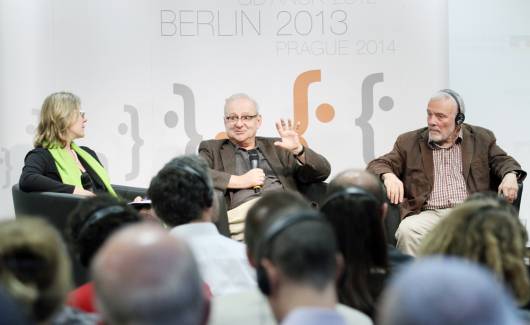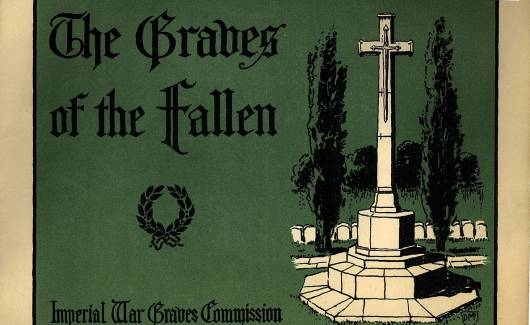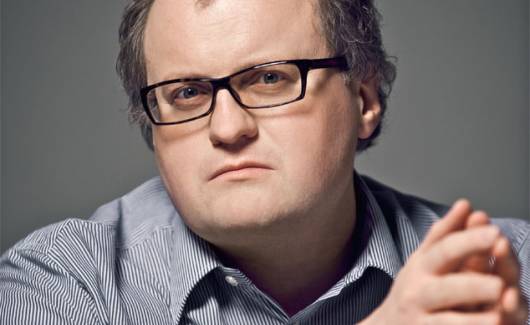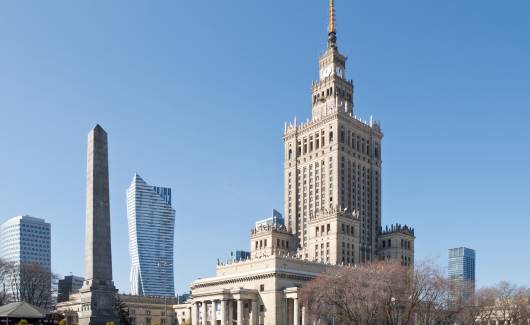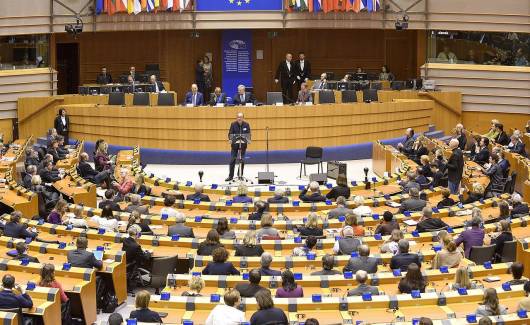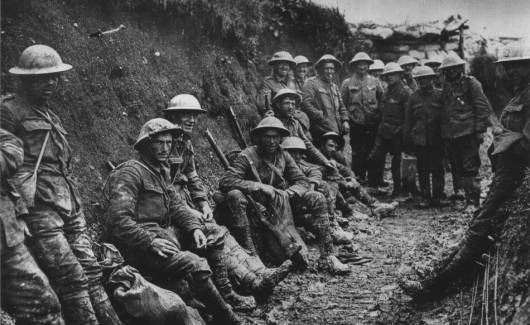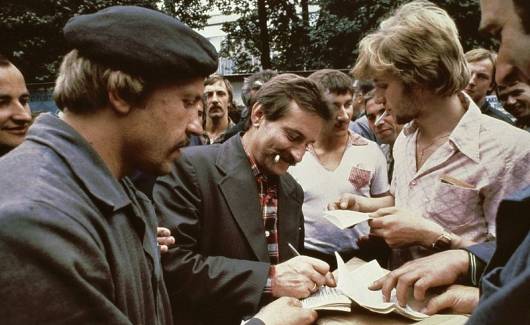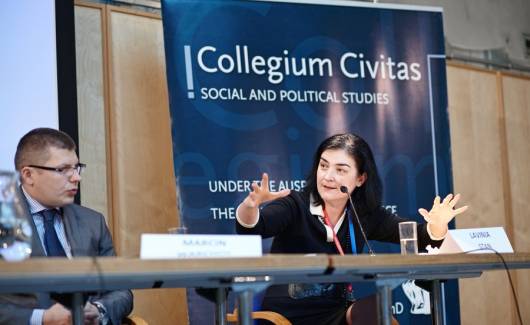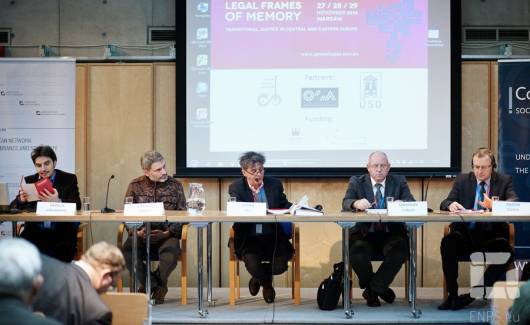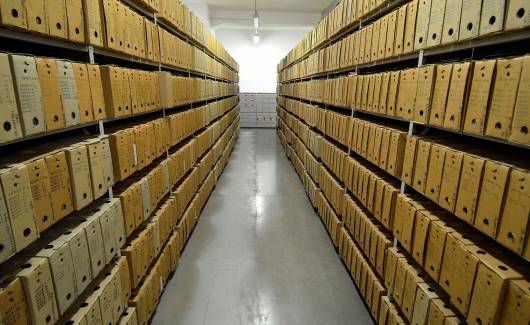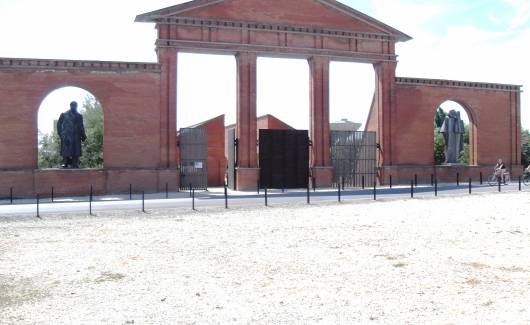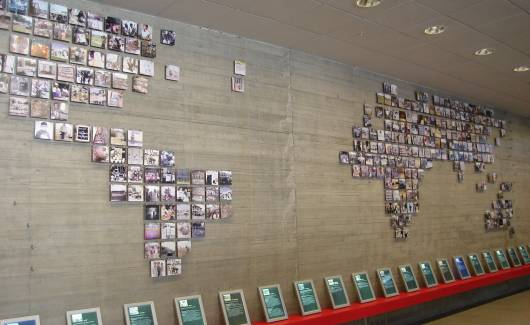ABSTRACT
During the Interwar Period, the poet Rudyard Kipling worked closely with the newly-founded Imperial War Graves Commission to register British war dead, to construct permanent war cemeteries and memorials for the fallen, and to cultivate images of sacrifice, equality, and unity in the developing British collective memory of the Great War. Through his work in public relations, the drafting of memorial inscriptions, and the inspection of the progress of cemetery construction, Rudyard Kipling aided the Commission’s mission to memorialize and commemorate the over one million individuals killed during the First World War, and both directly and indirectly molded the shaping of the British Empire’s war memories during his eighteen years with the organization.
Like millions of parents all across Europe, the Great War deeply affected Rudyard Kipling both personally and professionally. At the outbreak of the war, Kipling joined the British war effort through his craft, as well as by advising the British government on war propaganda. However, after the death of his son, Kipling began to focus more on activities to sustain the memories of the war dead, in part by joining the Imperial War Graves Commission. Kipling worked tirelessly with the Commission to keep the memory and sacrifice of the fallen soldiers alive in the minds of Britons everywhere, and thus his work added greatly to shaping the “memory boom” that followed the war. Though his work with the Commission at times seemed to contradict his war writings and propaganda, both his literary works and volunteerism molded British collective memory of the Great War for generations, as did the work of the Imperial War Graves Commission itself.
Rudyard Kipling, though never a soldier himself, developed a general respect and love for the British military, especially the colonialists. The amiable relationship between the British military and Rudyard Kipling began early in Kipling’s literary career. Kipling saw the military as the “essence of the empire”; this forged a bond in Kipling’s mind between the role of the military and the need to maintain a sense of unity within the British Empire (Gross 1972, 40). The Anglo-Boer War (1899–1902) was the first British conflict to capture Kipling’s attention, his imagination, and his sympathy. The harsh conditions in South Africa generated great interest for the welfare of British soldiers and their families (Gross, 1972, 86). This sympathy led Kipling to set up the Absent-Minded Beggar Fund for returning British soldiers and the families of men killed in action early in the war. He wrote in the Daily Mail in 1899, in the hope of reminding the British public of the sacrifice of its soldiers on a distant battlefield (Kipling, October 1899). This soldiers’ fund was the first instance of Kipling’s military philanthropy, a tradition that Kipling would follow for the rest of his life.
The outbreak of the Great War reignited Kipling’s humanitarian interests as well as his patriotic sentiments. The German invasion of Belgium outraged both Kipling and Britain to the point of patriotic fervor. In the early months of the conflict, Kipling and his wife, Carrie, worked closely with the Red Cross, and helped to lessen the plight of Belgian refugees. Kipling routinely visited military hospitals and camps, many times publishing his experiences for the world to see. His most famous trip to the Western Front occurred in August 1915, leading to the publication of “France at War” (Amis 1975, 98). Despite these frontline trips, the war became a harsh reality when Kipling’s only son, John, was killed in action at the Battle of Loos in September 1915. John Kipling was among the first to volunteer for the British war effort; however, like his father, the younger Kipling suffered from poor eyesight, which sidelined him from military service. However, given his adoration of the British military, Rudyard Kipling petitioned Lord Roberts to allow John to join the Irish Guards in 1915. The military commissioned John Kipling as a Second Lieutenant, sending his to the Western Front right after his eighteenth birthday (Mallett 2003, 161). John’s body was never recovered, even after numerous attempts by both Rudyard Kipling and the British military to gather information on John’s death (Ricketts 1999, 325–28). As an act of love, and maybe even penitence, Rudyard Kipling spent five and a half years writing the History of the Irish Guards, completing the work between September 1921 and June 1922. The purpose of the book, for Kipling, was to record the history of the regiment, rather than to focus on the horrors of the war (Gilmour 2002, 268–69). And in a final, and most lasting, gesture of atonement for his son’s death, Rudyard Kipling accepted an invitation from Fabian Ware, a fellow newspaperman and friend from the Anglo-Boer War, to join the Imperial War Graves Commission in 1917 (Pinney 1996, 15; Holt and Holt 1998, 139).
Prior to his decision to join the Imperial War Graves Commission, Kipling “claimed that he could not write from monuments.” He felt that he could not do justice to the sacrifice of fallen soldiers beyond writing the inscription “He died for his country” (Gilmour 2002, 278). The Commission “wanted a man of imagination and one who knew the [common] soldier” as literary advisor for the Commission, and pursued Rudyard Kipling for the position (Holt and Holt 1998,142). Despite his lack of confidence, Kipling relented to the mounting requests from the members of the newly-formed Imperial War Graves Commission, being formally appointed as the literary adviser to the Commission in October 1917 (Kipling October 1917). Many, including Fabian Ware, believed that the loss of his son gave Rudyard Kipling “a natural empathy with the relatives of the fallen” (Summers 2007, 20–21). Kipling would remain a member of the Commission for eighteen years, until his death in 1936 (Birkenhead 1978, 277).
The industrialized warfare and high death toll in the early months of the Great War stunned much of Europe. Concern for the care of the dead occupied the minds of many, including Fabian Ware, an educationalist and former newspaper man. Ware joined the Red Cross in 1914; he was unable to join the British military due to his advanced age. However, he chose to redirect his passions into recording the location of soldiers’ graves at the front. The British military officially recognized Ware’s work in February 1915, giving him the rank of Major, and establishing the Graves Registration Commission for the task. As the war spread beyond the European Continent, the Graves Registration Commission developed into the Directorate of Grave Registration and Enquires. Its work to find the bodies of the Empire’s dead came to encompass not only the Western Front but also Mesopotamia, Egypt, Palestine, and the Balkans (Cross 2008, 257). For Ware, the purpose of the Graves Registration Commission was to give the dead honorable burials, and to create a registry containing the names and locations of the Empire’s dead for relatives and future generations. To this end, the Commission worked tirelessly to locate soldier cemeteries, exhume isolated graves, and create new cemeteries for those who had not been formally buried in the heat of battle. In some cases, British soldiers had been buried in French and Belgian churchyards, alongside their allied comrades; however, as the preexisting cemeteries filled to capacity with the allied dead, Ware and the Commission began to negotiate with the Allied governments for the purchase of land to create new cemeteries for the British dead (The Times 1928, 13–15). This practice of purchasing foreign lands for new cemeteries became one of the basic practices of the future Imperial War Graves Commission, though Ware felt that his organization was severely hindered by having to work within the established military relations networks, leading to his call for the Commission to be given a royal charter that would separate the Commission into a separate entity, with powers to negotiate with foreign nations without the direct consent of the British military or the British government (Imperial War Graves Commission 10 May 1917, 5).
On 10 May 1917, the Commission, now renamed the Imperial War Graves Commission, received its charter from the King, giving it status as the sole organization charged with the remembrance and maintenance of the Empire’s war dead. The 1917 Charter stated that the purpose of the decree was to create “a permanent Imperial Body charged with the duty of caring for the graves of officers and men of Our military and naval forces raised in all parts of Our Empire who have fallen, or may fall, in the present War.” The secondary purpose of the Commission was to honor the memory of the fallen, without segregation of class, race, or religion, and perpetuate the ideals of their common sacrifice for future generations (Imperial War Graves Commission 10 May 1917, 1). To this end, the Commission was granted special powers, including the jurisdiction to acquire land for war cemeteries, to erect permanent buildings and memorials within war cemeteries, to provide upkeep for cemetery grounds (specifically headstone maintenance and gardening), and to maintain burial records and registries for the dead (Imperial War Graves Commission 10 May 1917, 5). The Imperial War Graves Commission met for the first time on 20 November 1917, to discuss not only the logistics of the Commission’s operations, but also the major guiding principles for the Commission (Longworth 1985, 29).
In a pamphlet written by the Director of the British Museum and a member of the Commission, Sir Frederic Kenyon, and later in a booklet by Rudyard Kipling, the Imperial War Graves Commission laid out the guiding principles of the organization, which focused on issues of common sacrifice, remembrance, and equality. The most influential principle of the new Imperial War Graves Commission was extending equal treatment for the Empire’s dead regardless of “military or civil rank, race or creed.” The purpose this principle was to honor the common sacrifice of officers, enlisted soldiers, and colonial soldiers (Cross 2008, 257). The Commission, including Rudyard Kipling, felt that the graves of the fallen should be uniform in appearance and maintenance, for each had died for a common cause, and if the cemeteries were allowed to become private memorials, the graves of the more-wellto- do soldiers would become more “ornate or imposing to distinguish their graves from others.” Kipling and the Commission argued that the wealthy should not be allowed to “proclaim their grief above other people’s grief ” simply because the wealthy had “larger bank accounts.” The Commission felt that the movement for special graves was a “demand for privilege in the face of death,” which meant that the “common sacrifice made by all ranks would lose the regularity and orderliness most becoming to the resting places of soldiers, who fought and fell side-by-side.” (Longworth 1985, 33). Another important principle of the newly-formed Commission was to respect the faith of the dead, including the minimizing of the Christian overtones of the cemeteries and the incorporation of the religious symbols of other faiths, including those of Jews, Muslims, and Hindus, all of whom fought for the British military and the Colonial militaries. The only major Christian symbol to be placed in the cemeteries would be the Cross of Sacrifice, along with the more religiously ambiguous Stone of Remembrance (Geurst 2010, 34). The purpose of the Stone of Remembrance was to harken back to the Paleolithic symbol of the altar and sacrifice, which was common in most cultures throughout the world. The Commission chose to include in its principles the desire to honor the burial customs and beliefs of the soldiers fighting for the British Empire. The headstones of non-Christians included symbols of their own faith and the major monuments of the cemeteries included Biblical phrases that did not specifically read as Christian; the best example of this principle can be seen in the inscription chosen for the Stone of Remembrance (Kenyon 1918, 10–12).
During the first two decades of the Imperial War Graves Commission, the organization located 767,978 graves, 180,861 of which had been unidentified. The Commission recorded the names of a further 336,912 soldiers killed in the war, who possessed no known graves (Ware 1937, 26). The work of the Commission following the Great War included the creation of 970 cemeteries in France and Belgium, approximately one thousand Crosses of Sacrifice, 560 Stones of Remembrance, over 600,000 headstones, and eighteen memorials to those “Missing” (Ware 1937, 56–57). The work of the Commission, including its future work after the Second World War, has become one of the largest and most successful examples of the importance, maintenance, and steering of collective memory in the twentieth century.
After the Armistice in 1918, the Imperial War Graves Commission’s work truly began on an international scale. The battlefields were “systematically combed” for the graves of the British war dead, a process impeded by the constant bombardments of artillery. The relentless fighting destroyed the water management systems, especially on the Western Front, leaving the ground of France and Belgium “a muddy lunar landscape,” filled with decaying bodies and stagnant water (Geurst 2010, 56). In his pamphlet on the Commission, Kenyon mentioned that the burial sites range from isolated and mass graves on destroyed battlefields, to former sites of hospitals and casualty clearing stations, to French and Belgian civilian cemeteries, leaving the Commission with the responsibility to find and create cemeteries for over a million individuals, and the responsibility to remember the identities of the missing, who would never have formal graves (Kenyon 1918, 5). The cemeteries were originally constructed using provisional wooden crosses as grave markers. Over the decades, the Commission slowly replaced the wooden crosses with headstones fashioned from Portland stone. These headstones measured 2 feet 6 inches by 1 foot 3 inches and were uniform in design, with the only major differences between gravestones being the regimental badges and symbols of faith. The Commission consulted the various regiments of the British military, asking them to create their own special design for the headstones (Kipling 1918, 6). The Commission quarried more than 700,000 tons of Portland stone for the cemeteries during the Interwar Period, making the operation one of the largest industrial endeavors of the twentieth century (The Times 10 November 1928, 8).
Along with the construction of the headstones, the Commission devoted much time and effort to the design and construction of the two central monuments for the cemeteries: the Cross of Sacrifice and the Stone of Remembrance. It was agreed within the Commission that the central monument(s) needed to be simple, as well as “durable, dignified, and expressive of the higher feelings with which we regard our dead.” In the beginning, the Commission only desired the construction of a Stone of Remembrance; the Cross of Sacrifice was a compromise with the Christian Lobby in Britain, when its suggestion of crosses for headstones was rejected by the Commission because it would ill suit soldiers of other faiths (Kenyon 1918, 10; Stamp 1990, vii; Aiden December 2007, 12–30). The Stone of Remembrance, designed by Sir Edwin Lutyens, was envisioned as a large stone altar approximately twelve feet in length, which would be placed on the “eastern side of each cemetery,” with the graves of the fallen facing the altar-stone, just as the British armies had faced eastward during the Great War (Kenyon 1918, 10–12). This was in stark contrast to the later construction of the Cross of Sacrifice, designed by Sir Reginald Blomfield. The Cross of Sacrifice stood above the graves, with a bronze sword at its center to signify the sacrifice of the fallen for the British Empire (Gibson and Kingley 1989, 52). Of all the policies of the Imperial War Graves Commission, the most contested was the policy regarding exhumations and repatriation. The Commission believed that it would not be fair to the lower classes to allow the wealthier sections of British society to bring home their war dead; this would go against the principle of equal treatment for the fallen. The idea of equality for all was so important to the Commission that it fought for the principle in the House of Commons in 1920, winning the right to reject repatriation and private memorials (King Spring 1999, 256–257; Gilmour 2002, 279). The Commission viewed their work as the creation of an “Imperial and National, not a Private Memorial,” leading the Commission to suggest that private memorials were for the home front (Burdett-Coutts 24 April 1920, 5). To appraise the public outcry over the policy regarding repatriation, the Commission agreed that relatives would be allowed to pay for a short, personal inscription on the individual headstones, though the inscription could not be longer than sixty-six letters (Kipling 1919, 11).
At the center of all of the Commission’s policies and decisions was Rudyard Kipling. Kipling had three main roles within the imperial organization, aside from his role as a voting member on the inner workings of the Commission. His most influential responsibilities to the molding of British collective memory included public relations, the formulation of memorial inscriptions, and touring the cemeteries to report on the construction progress. In the early days of the Commission, Kipling believed that it was important for the Commission to have a publicity department; this role eventually fell onto his shoulders. As the publicity department, Kipling was responsible for the regulation of publications, tours, and the publication of letters to British and international newspapers on the behalf of the Imperial War Graves Commission (Ware 6 February 1920). One of Kipling’s first duties was to write a pamphlet for the British public on the policies and principles of the organization. The pamphlet, entitled “Graves of the Fallen,” was published in 1918 and briefly outlined a great deal of important information regarding the Commission’s work on the fronts, specifically the designs for the cemeteries, the policy of equal treatment, and memorials for the missing (Kipling 1919, 1–5). Kipling volunteered for the project in the hopes that his fame would help the Commission reach a wider audience and command greater attention (Arthur Browne 8th February 1919).
Another influential Commission project for Kipling was the pamphlet for King George V’s pilgrimage to the war cemeteries on the Western Front in May 1922. Kipling performed multiple roles during this royal tour; however, regarding his work in public relations, Kipling edited the pamphlet that covered the King’s tour and worked closely with Ernest Hodder-Williams & Stoughton Publishers to circulate more than 20,000 copies of The King’s Pilgrimage. Along with editing the pamphlet, Kipling also wrote a special poem to mark the occasion, one of his most moving pieces of the postwar years (Aiden December 2007, 26; Hodder-Williams 11 August 1922). As an added responsibility to the Crown, Kipling also wrote the King’s Speech, given at Terlincthun; this act led to a close friendship between Kipling and the Royal family, with Kipling writing a great number of official speeches for the remainder of his and George V’s lives (Holt and Holt 1998, 149; Amis 1975, 103). Finally, Kipling repeatedly agreed to attend the unveiling of war memorials in Britain and abroad, though many times he could not, due to his declining health during the Interwar Period (Kipling 6 October 1924). Kipling, along with Fabian Ware, became the public face of the Commission and its work for much of the 1920s and 1930s, giving the Imperial War Graves Commission both legitimacy and political standing both at home and in foreign affairs.
The most time-consuming responsibility for Kipling during his years as a member of the Imperial War Graves Commission was the drafting of special inscriptions for the war cemeteries, monuments, and memorials. Following his assertion that he was not qualified to craft the various inscriptions required for the Commission, Kipling originally suggested in 1919 that the Commission gather suggestions for inscriptions from the general public; however, after reviewing the majority of the responses, Kipling decided that most were unusable and that he would have to write the inscriptions himself (Arthur Browne 23 December 1919; Cemetery Entrance Inscriptions 15 January 1920). In all cases, the inscriptions chosen by Kipling were crafted to avoid “the language of Christianity” because Kipling felt that using overt Christian symbolism would offend soldiers of other faiths. In many cases, when Kipling did choose a passage from the Bible, the inscription focused on the ideas of sacrifice and memory, thus being universal in message and sentiment (Aiden December 2007, 19).
The first major inscription that Kipling drafted was for the Stone of Remembrance. He wanted the message to conveyance the Commission’s principles of honor and remembrance while remaining simple to verse. After debating the options, Kipling chose an excerpt from the Book of Ecclesiasticus, which honored famous individuals for their sacrifice, “Their Name Liveth For Evermore” (Kenyon 1918, 23–24; Kipling 19 November 1918, 521). In a conversation between Kipling and Lutyens, Kipling later remarked that Lutyens’s Stone of Remembrance was “an inspiration and it looked well no matter where it was put. The only mistake I made was to have an inscription on it. Even my proposed ‘Amen’” (Skelton and Gliddon 2008, 35). Despite Kipling’s and Lutyen’s sentiments regarding the symbolism of the Stone of Remembrance, the Anglican Church felt that the “War Stone,” as it was originally termed, possessed no true religious function in the war cemeteries. However, Luteyn noted years after the construction of his Stones of Remembrance that many were used as altars to the memory of the dead, much as the architect had hoped, therefore becoming a major instrument in the formation and maintenance of British collective memory for many visitors (Geurst 2010, 35).
For his work with the Commission, Kipling produced inscriptions for a wide array of monuments to commemorate the sacrifices made by the war dead; many consisted of tablets for the entrances of cemeteries, tablets for religious institutions, and plaques to memorialize individuals lost at sea. The most frequent type of inscription produced by Kipling was for general memorials, which commemorated the memory of the specific regiments fighting during the war. These inscriptions usually mentioned the regiment’s name, sometimes their nationality, and the location of the battle. The best examples of these more common memorials include the Egyptian Labor and Camel Transport Corps, who fought in the Middle East, the Egyptian Expeditionary Forces and the New Zealand Forces fighting during the Palestine campaigns, and the Indian Armies commemorated at Neuve-Chapelle, Delhi, and Reshire (Chettle 27 December 1923; Kipling 28 December 1923; Ware 4 November 1924; Chettle 14 April 1925; King 24 July 1930). For Kipling, the most important information to convey through these inscriptions was the idea of memory and sacrifice. For the inscription on the memorial to the Palestine campaigns, Kipling suggested the following message to memorialize the men fighting for the British cause: “This memorial chapel was erected by the Officers, Non-commissioned Officers, and Men of the Egyptian Expeditionary Force, to the honoured memory of their comrades who fell in the Palestine Campaign 1914–1918” (Ware 4 November 1924). Much like the memorial to Palestine, Kipling spent much of his time making sure that the Indian Armies received their due commemoration after the war. In one of his suggested inscriptions, Kipling chose the message “To the glorious memory of the British officers, Indian officers and men of the Indian Army who fell in France and Belgium during the Great War of 1914–1918. The names of those whose resting place is unknown are recorded here” for the Indian Memorial at Neuve-Chapelle in France (Chettle 14 April 1925).
Another type of inscription created by Rudyard Kipling during the course of his membership to the Imperial War Graves Commission was inscriptions for religious institutions including both churches and cathedrals, particularly in England, France, and Belgium. The Commission requested inscriptions for cathedrals in France and Belgium, including Notre Dame, as well as an inscription for tablets to be placed in Westminster Abbey. For the memorial tablets in Notre Dame, Kipling chose the inscription “To the glory of God and to the memory of one million dead of the British Empire who fell in the war for civilization 1914–1918 and of whom the greater part rest in France” (Kipling 24 May 1923). And much like the tablets in Paris, the memorial placed in Westminster Abbey focused on the memory of common sacrifice across the whole of the British Empire. The inscription crafted by Kipling for the occasion simply read: “To the glory of God and to the memory of one million dead of the British Empire who fell in the Great War 1914–1918 they died in every quarter of the Earth and on all its seas and their graves are made sure to them by their kin. The main host lie buried in the lands of our Allies of the war who have set aside their resting places in honour for ever” (Imperial War Graves Commission 19 October 1926). Of the two tablets located in religious institutions, the memorial constructed for Westminster Abbey plays a greater role in the development of British collective memory after the Great War, because more Britons visited Westminster Abbey than did Notre Dame, making the commemoration a larger part of Britain’s daily life, especially in London.
The final type of inscription produced by Kipling for general memorialization focused on the memory of individuals lost at sea, especially mercantile marines, hospital ships, and steamships (Imperial War Graves Commission 8 February 1928; Kipling 24 March 1926; Chettle 1 December 1923). At the 107th meeting of the Commission on 8 February 1928, it was recorded that Kipling suggested the following inscription for the Mercantile Marine Memorial at Tower Hill in London:
To the honour of the British Mercantile Marine. Here are recorded the names of more than twelve thousand officers and men of the Merchant service who during the war 1914–1918 gave their lives unfalteringly for the needs of their country, who met death at the hands of the enemy and whose grave is the sea (Imperial War Graves Commission 8 February 1928).
Many of the inscriptions for lost hospital ships and steamships generally followed the above example, with Kipling requesting the public remember the various actors who sank with their ships during the course of the war (Kipling 24 March 1926; Chettle 1 December 1923). Like the other members of the Commission, Kipling often sought to commemorate as many of the dead and lost as possible, thus leading to the creation of numerous memorials and monuments to the dead, wherever they lie, even if their graves were the sea.
While many of the Commission’s memorials focused on the graves of identified individuals, much of the public, as well as Kipling himself, worried about the memory of the dead who possessed no known grave; both Kenyon and Kipling specifically addressed this public concern for the unidentified and lost graves in their Imperial War Graves Commission pamphlets in 1918. The Commission decided that special memorials were needed to commemorate the lost souls whom the Commission could never identify. These memorials became known as the “Kipling memorials,” named after John Kipling, who acted as an example for relatives’ need for closure. According to the Imperial War Graves Commission, the Kipling memorials “commemorate a soldier who once had a registered grave in a known cemetery but whose grave was not discovered when the other graves in the cemetery were concentrated into another cemetery” as well as soldiers who were listed as missing in action, like Kipling’s son John (Imperial War Graves Commission 17 November 1926). For such memorials, Rudyard Kipling chose the inscription “Their Glory Shall Not Be Blotted Out” for those known to have fallen in the region, while the inscription “A Soldier of the Great War Known Unto God” for those individuals who possessed a formal grave but no formal identification (Gilmour 2002, 280). Of all of the Kipling Memorials constructed by the Commission during the Interwar Period, the memorial to the British fallen on the Menin Gate in the city of Ypres captivated the public’s attention the most, not only for its beauty but for the thousands of names recorded on this walls to the dead of Ypres Salient and the Somme (Blomfield July 1927). To commemorate the largest memorial to the missing, Rudyard Kipling chose the words “To the armies of the British Empire who stood here from 1914 to 1918, and to those of their dead who have no known grave,” as well as an inscription to be displayed over the stairs that led to the ramparts, which read “Here are recorded names of officers and men who fell on Ypres Salient, but to whom the fortune of war denied the known and honoured burial given to their comrades in Death” (Blomfield July 1927). For Kipling, the memorials to the missing were the most important work of the Commission, because without these special monuments, the names of the missing would rapidly become lost to time, which was unthinkable to the Imperial War Graves Commission.
The final role given to Kipling by the Imperial War Graves Commission was to tour the cemeteries and memorials under construction throughout Europe, the Middle East, and North Africa. Originally, Kipling and his wife Carrie travelled extensively in Europe, though France was their most frequent destination. After the Great War, the Kiplings continued their vacations abroad, though much of the time the vacations were paired with Kipling’s mission to inspect and report on the state of the burial grounds, particularly in France in the early 1920s (Amis 1975, 101). In the summer of 1920, the Kiplings travelled nearly 1,500 miles throughout France to view the progress being made on the cemeteries on the Western Front. This trip included a visit to the battlefields near Loos and the Somme, where the Kiplings then ventured to Chalk Pit Woods, the last known location of their son, John (Longworth 1985, 79; Gilmour 2002, 280). Kipling remarked to Edmonia Hill in 1921 that his role as a member of the Imperial War Graves Commission had made him very familiar with the Western Front, but that this familiarity had not diminished his feelings upon seeing the “ruins and spoliation” (Kipling 2 June 1921, 80). While inspecting the work being completed at Rouen, Rudyard Kipling remarked that he was struck by “the extraordinary beauty of the cemetery and the great care that the attendants had taken of it, and the almost heartbroken thankfulness of the relatives of the dead who were there” (Longworth 1985, 79). The purpose of many of these cemetery tours for Kipling was to report on the conditions that he encountered, make recommendations to the Commission, and to push for great funding of the projects by both the British public and the British government (Gilmour 2002, 281). Two of the many recommendations sent to the Commission by Rudyard Kipling were the creation of enquiry offices and grave directories to help relatives and friends find the graves of their fallen loved ones. Along with the tours throughout the Western Front, Kipling was also asked by Fabian Ware to inspect the progress of cemeteries in the Middle East, Egypt, and Gibraltar (Ware 14 March 1922; Commonwealth War Graves Commission, www.cwgc.org/about-us/whatwe-do/records/our-archive.aspx.
The work of the Imperial War Graves Commission, and therefore the work of Rudyard Kipling, both directly and indirectly influenced the construction of British collective memory, to focus on remembering the Great War as a moment of common sacrifice between soldiers and between nations. The purpose of the Commission regarding the memorialization of the fallen was to remember the individual identities of the war dead, to use the cemeteries and memorials as constant reminders to future generations to avoid war, and to unite both the Empire and the nations of the world in the common memory of sacrifice.
From the outset of its creation, the Imperial War Graves Commission pursued the ideas of comradeship and common sacrifice in its work. The Commission felt that the place for the “individual memorial [was] at home” while the purpose of the Commission and the war graves cemeteries was to be a “symbol of a great Army and a united Empire,” thus, the Commission believed that the dead of all ranks and backgrounds should be “commemorated in those cemeteries where they lie together, the representatives of their country in the lands in which they served.” If private memorials were allowed to be constructed, the memory of this common sacrifice and common service would be lost forever (Kenyon 1918, 6). The purpose of the Commission, first and foremost, was to secure the memory of the fallen in foreign lands. This involved the need for identification, memorialization, and preservation. One of the Commission’s most pressing concerns after the construction of the war cemeteries was the future preservation and repairs for the headstones and the monuments; the Commission felt that a lost name or a broken tombstone meant “a man forgotten” (Longworth 1985, 137). To this end, the Commission petitioned the Treasury for a fund to maintain the appearance and therefore the memory of the war dead. In 1926, the Treasury granted the Imperial War Graves Commission a fund of £5,000,000 for the upkeep of the cemeteries (Kenyon 1924/5). As the Commission worked diligently to immortalize the names of the British dead, it also worked to impress upon visitors to the cemeteries and future generations that the cemeteries were to be viewed as hallowed ground, and that the visitors were “in the presence of those dead through the merits of whose sacrifices they enjoy their present life and whatever measure of freedom is theirs to-day” (Kipling 3 December 1922).
Along with the Commission’s mission to remember the individual dead, the organization worked to help the British people, and by association other nations, to remember to avoid the horrors and consequences of yet another European war, though as history would show, this endeavor was doomed to failure. In the King’s speech written by Rudyard Kipling during the King’s Pilgrimage in 1922, the King, and by extension the Commission, expressed the importance of the war cemeteries as a reminder for the peoples of Europe to avoid future wars. The King stated “I have many times asked myself whether there can be more potent advocates of peace upon earth through the years to come, than this massed multitude of silent witnesses to the desolation of war” (Kipling 1922, 93). In his annual Armistice Day and Remembrance Day addresses to the nation, Fabian Ware often passionately pressed for the public and the government to remember the mistakes of the past and avoid future wars. In his radio broadcast on 9 November 1930, Ware stated that the cemeteries and memorials were a “standing and visible record of the cost of war” and an “insistent reminder of the dread consequences of the political conditions which obtained in the world before 1914” (Ware 9 November 1930). Ware repeatedly referred to the war cemeteries as “silent cities of the Dead,” a term coined by Rudyard Kipling during his time as a commissioner for the organization; Ware used this imagery of hundreds of silent cities and witnesses to remind the British public that the war had immediate and long-term consequences, which should not be forgotten owing to fear, grief, or callousness (Kipling 1922, 93; Ware 11 November 1926). Ware believed that the cemeteries needed to stand as a constant reminder, particularly for future generations, of the cost of war, hoping that the visible reminder of the Great War would keep the memories of overwhelming sacrifice from being swept away, as it had been in the past (Ware 9 November 1930).
Like the goals of remembering the individual and remembering to avoid future conflict, the Imperial War Graves Commission sought, albeit indirectly, to unite both the British Empire and the nations of the world through the memory of the Great War and both national and imperial sacrifice. In the 1922 pamphlet on the King’s Pilgrimage edited by Rudyard Kipling, the Commission writes that the work of the Commission must serve to “draw all people together in sanity and self-control,” and to establish better relations with the nations of the world through the memory of a “common heroism and a common agony” (Kipling 1922, 93). For the Commission, and the British government, the Imperial War Graves Commission was first and foremost an imperial body, whose purpose was to recall the role of the Great War in consolidating the British Empire through a common cause and a common sorrow. Prime Minster Stanley Baldwin, Rudyard Kipling’s cousin, stated that the cemeteries constructed by the Commission would “testify to coming generations, to the quickening sense of Imperial unity which [had] grown out of our great trial” (The Times 10 November 1928, 3). The Commission not only signified a united Empire through its visible work around the world, but it illustrated the great effort of the British Empire to work together to remember the great loss of life during the war. The Commission was comprised of representatives from all the major regions of the Empire, including Canada, Australasia, New Zealand, South Africa, and Newfoundland, all of whom played a large role in the funding and construction of the war cemeteries and memorials throughout the world (The Times 10 November 1928, 3). While the Commission illustrated the unification of the British Empire around a common loss, the organization also helped to unite nations around the globe in peace during the Interwar Period. The Commission created transnational bonds of common remembrance between former allies and former enemies, which led to both the creation of the Joint Committees for the guardianship of the graves and the joint ceremonies of remembrance, as nations came together to collectively mourn the fallen every November (Ware 1937, 12; Ware 1933). The Commission often noted the existence of cults of remembrance, especially in Belgium and France, where local villagers traveled regularly to the war cemeteries of the Commission to remember “the strange soldiery that could not talk their tongue, but played with [the village children],” sometimes even bearing “personal tributes” to the war dead of a foreign nation (The Times 10 November 1928, 7). Many times, these private occasions of foreign remembrance continued for decades, long after the actual memories of the foreign soldiers had faded.
On 18 January 1936, Rudyard Kipling died in England, from a perforated ulcer. His funeral was held at Westminster Abbey on 23 January, just days after the death of King George V (HMSO 23 January 1936). The Imperial War Graves Commission, at the behest of Fabian Ware, sent a special wreath to Westminster; the wreath was wrought from flora found in many of the Imperial war cemeteries in France (Imperial War Graves Commission January 1936). The death of Kipling was felt throughout the ranks of the Imperial War Graves Commission as well as the British Empire and the world. In its sixteenth annual report, the Commission wrote that it wished to convey its gratitude to Rudyard Kipling for his years of service to the cause of the war fallen:
The Commission [desires to] place on record their deep and abiding sense of loss which they have sustained in the death of their colleague and friend, Mr. Rudyard Kipling. They feel that an association of no ordinary official nature has been broken; and they know that this feeling is shared by their staff, to whom, in consultation in London or on frequent visits to the cemeteries abroad, he gave encouragement, inspiration, and a sense of personal interest in their work and welfare (Imperial War Graves Commission 1936, 5).
Lt.-Colonel G. P. Vanier, representing the Dominion of Canada at the sixteenth annual meeting of the Imperial War Graves Commission echoed the sentiments of many at the Commission as well as the rest of the world when he stated that
Only a really great man, or a child, could be as simple as he was, and I for one have no doubt that he will rank as one of the greatest writers and also, which is perhaps more important, as one of the finest characters of modern times... Rudyard Kipling was the great apostle of service, whether of obedience or of command: the subject’s service or the King’s. Unafraid to serve, and we can best honour his memory by serving... (Imperial War Graves Commission 1936, 6).
It was clear to many that Kipling’s death had left a gaping hole in the Imperial War Graves Commission, so much so, that when Kipling’s cousin, former Prime Minster Stanley Baldwin, stepped in to replace Kipling on the board of the Imperial War Graves Commission, it was assumed that no one man could replace the poet. The Commission was also forced to appoint the critic Edmund Blunden to help Baldwin take up Kipling’s fallen mantle, leaving another generation of commissioners to carry on the memories of the fallen (Holt and Holt 1998, 203–04). In his book The Immortal Heritage, which commemorated the first twenty years of the Imperial War Graves Commission, Fabian Ware writes that “Rudyard Kipling gave of his genius freely and whole-heartedly in the service of the commemoration of the dead,” helping to further the major principles and ideals of the Commission and helping to maintain the memory of the Great War in the minds of future generations (Ware 1937, 61).
Shortly before his death, Rudyard Kipling remarked that the immense undertaking of the Imperial War Graves Commission was “The biggest single bit of work since any of the Pharaohs – and they only worked in their own country” (Ware 1937, 56). Rudyard, along with the rest of the Commission, worked diligently during the Interwar Period to preserve the memory of those who died for their country in the Great War. While this was the Commission’s and Kipling’s main purpose for decades, they also both directly and indirectly influenced the creation of British collective memory surrounding the First World War, through their spoken and written rhetoric and their visible endeavors. Of the various postwar outlets for British collective memory, the work of Rudyard Kipling and the Imperial War Graves Commission signify the most active and all-encompassing effort to mold the memories of the Great War, not only to remember the millions of dead across the battlefields, but to unite all peoples in a common memory of sacrifice and mourning, in the hope that by doing so, the world would not repeat the failures of the past. Many historians point to the Interwar Period as the rise of the Memory Boom in the West, and like the efforts of the Imperial War Museum and the Great War artists, the Imperial War Graves Commission spent much of these two decades focusing on the potent costs of the Great War and planting the seeds of hope for peace across the Continent.
Chelsea Medlock. Doctoral candidate at Oklahoma State University, specializes in the history of industrialization and its effects on British identity and collective memory. Ms. Medlock is currently writing her doctoral dissertation entitled, Re-Membering the Forgotten Legions: the Veteranization of British War Horses, 1870–1945. Her dissertation focuses on the changing perceptions of the British military, animal welfare organizations, and the public regarding the employment and veteran status of war horses in the age of total war. Ms. Medlock has conducted research into both animal history and the history of industrialization, presenting at numerous conference in North America and Europe.
List of References
“Cemetery Entrance Inscriptions,” January 1920, Commonwealth War Graves Commission, WG 214–7, 15.
“Transcript of the 107th meeting of the Imperial War Graves Commission,” 8 February 1928, Commonwealth War Graves Commission, WG 998/2/2 pt. 3.
“Unveiling of the tablet presented by the Imperial War Graves Commission at Westminster Abbey,” 19 October 1926, Commonwealth War Graves Commission, WG 1734–2–1–1 pt.1.
Aiden, Michael (2007) “Rudyard Kipling and the Commemoration of the Dead of the Great War,” Kipling Journal (Dec, 2007), pp. 12–30.
Amis, Kingsley (1975) Rudyard Kipling and His World (London: Thames and Hudson).
Birkenhead, Lord (1978) Rudyard Kipling (New York: Random House).
Blomfield, Reginald “A Note on the Menin Gate,” July 1927, Commonwealth War Graves Commission, SDC 42.
Burdett-Coutts, William, Presentation to the House of Commons, April 24th 1920, Commonwealth War Graves Commission, Add 1/1/10. Charter of the Imperial War Graves Commission, 10 May 1917, National Archives, KEW HO 45 21621.
Commonwealth War Graves Commission, Archive Catalog for the Commonwealth War Graves Commission, available online at: www.cwgc.org/about-us/what-we do/records/ourarchive.aspx
Cross, Robin (2008) In Memoriam: Remembering the Great War (London: Ebury Press).
Geurst, Jeroen (2010) Cemeteries of the Great War by Sir Edwin Lutyens (Rotterdam, The Netherlands: 010 Publishers).
Gibson, Edwin, Major and G. Kingley Ward (1989) Courage Remembered: the Story behind the Construction and Maintenance of the Commonwealth’s Military Cemeteries and Memorials of the Wars of 1914–1918 and 1939–1945 (London: HMSO).
Gilmour, David (2002) The Long Recessional: the Imperial Life of Rudyard Kipling (New York: Farrar, Straus, and Giroux).
Gross, John (ed.) (1972) The Age of Kipling (New York: Simon and Schuster). HMSO. The Order of Service pamphlet, 23 January 1936, Commonwealth War Graves Commission, Add 1/2/8.
Holt, Tonie and Valmai Holt (1998) ‘My Boy Jack?’ The Search for Kipling’s Only Son (Barnsley, UK: Pen & Sword Military).
Imperial War Graves Commission. “Handwritten note regarding the Kipling memorials,” 17 November 1926, Commonwealth War Graves Commission, WG 1031.
Imperial War Graves Commission. “Telegram from The Imperial War Graves Commission to Mrs. Carried Kipling,” January 1936, Commonwealth War Graves Commission, WG 237.
Imperial War Graves Commission (1936) Sixteenth Annual Report of the Imperial War Graves Commission (London: HMSO).
Kenyon, Frederic, Lieutenant-Colonel Sir (1918) War Graves: How the Cemeteries Abroad will be Designed (London: HMSO).
King, Alex. “The Archive of the Commonwealth War Graves Commission,” History Workshop Journal 47 (Spring, 1999), pp. 253–59.
Kipling, Rudyard (ed.) “Rough Draft of the King’s Pilgrimage pamphlet, 1922: King’s Speech,” Commonwealth War Graves Commission, WG 1544/2 pt 1.
Kipling, Rudyard (1919) The Graves of the Fallen (London: HMSO).
Letter from Arthur Browne to Admiral Poe, 8th February 1919, Commonwealth War Graves Commission, WG 237/1.
Letter from Arthur Browne to Rudyard Kipling, 23 December 1919, Commonwealth War Graves Commission, WG 214–7.
Letter from Major Henry Francis Chettle to the Director of Works, 14 April 1925, Commonwealth War Graves Commission, WG 861–2–4.
Letter from E. J. King to Lord Arthur, 24 July 1930, Commonwealth War Graves Commission, WG 127–5–4 pt 1.
Letter from Ernest Hodder-Williams to Rudyard Kipling, 11 August 1922, Commonwealth War Graves Commission, WG 1544/2 pt1.
Letter from Fabian Ware to Arthur Browne, Commonwealth War Graves Commission, WG 214–7, 6 February 1920.
Letter from Fabian Ware to Lt. Colonel Frederic Kenyon, 4 November 1924, Commonwealth War Graves Commission, WG 1082.
Letter from Fabian Ware to Rudyard Kipling, 14 March 1922, Commonwealth War Graves Commission, WG 1189/3.
Letter from Frederic Kenyon to Rudyard Kipling, 1924–1925, Commonwealth War Graves Commission, SDC 64.
Letter from Major Henry Francis Chettle to Rudyard Kipling, 1 December 1923, Commonwealth War Graves Commission, WG 219/7/5/1.
Letter from Major Henry Francis Chettle to Rudyard Kipling, 27 December 1923, Commonwealth War Graves Commission, WG 298 pt 1.
Letter from Rudyard Kipling to Edmonia Hill, 2 June 1921, in Thomas Pinney The Letters of Rudyard Kipling, Volume 5, 1920–1930 (Iowa City, IA: University of Iowa Press, 2004).
Letter from Rudyard Kipling to Fabian Ware, 24 May 1923, Commonwealth War Graves Commission, WG 1734/1/3 pt 1.
Letter from Rudyard Kipling to Fabian Ware, 6 October 1924, Commonwealth War Graves Commission, Add 1/1/96.
Letter from Rudyard Kipling to Fabian Ware, 29 October 1917, Commonwealth War Graves Commission, SDC 8.
Letter from Rudyard Kipling to Major Henry Francis Chettle, 24 March 1926, Commonwealth War Graves Commission, WG 437/4 pt 1.
Letter from Rudyard Kipling to Major Henry Francis Chettle, 24 March 1926, Commonwealth War Graves Commission, WG 437/4 pt 1.
Letter from Rudyard Kipling to Major Henry Francis Chettle, 28 December 1923, Commonwealth War Graves Commission, WG 298 pt 1.
Letter from Rudyard Kipling to the Daily Mail, October 1899, University of Sussex, 28/6.
Letter from Rudyard Kipling to the Editor of the Daily Telegraph, 3 December (1919–1923?), Commonwealth War Graves Commission, WG 360 pt 1.
Letter from Rudyard Kipling to the Imperial War Graves Commission, 19 November 1918, in Thomas Pinney The Letters of Rudyard Kipling, Volume 4: 1911–1919 (Iowa City, IA: University of Iowa Press, 1999).
Longworth, Philip (1985) The Unending Vigil: a History of the Commonwealth War Graves Commission, 1917–1984. 2nd ed. (London: Leo Cooper).
Mallett, Phillip (2003) MRudyard Kipling: a Literary Life (New York: Palgrave Macmillan).
Pinney, Thomas (ed.) (1996) The Letters of Rudyard Kipling, Volume 3 1900–1911 (Iowa city, IA: University of Iowa Press).
Ricketts, Harry (1999) The Unforgiving Minute: A Life of Rudyard Kipling (London: Chatto & Windus).
Skelton, Tim and Gerald Gliddon (2008) Lutyens and the Great War (London: Frances Lincoln).
Stamp Garfield, John and Gavin Stamp (1990) The Fallen: a Photographic Journey through the War Cemeteries and Memorials of the Great War, 1914–1918 (London: Leo Cooper).
Summers, Julie (2007) Remembered: the History of the Commonwealth War Graves Commission (London: Merrell).
The Times (1928) “War Graves of the Empire: Reprinted from the Special Number of The Times, November 10, 1928.” (London: The Times Publishing Co.).
Ware, Fabian “Radio Broadcast Speech,” 9 November 1930, Commonwealth War Graves Commission, WG 237/2.
Ware, Fabian. “Radio Speech: War Graves of the Empire,” 11 November 1926, Commonwealth War Graves Commission, SDC 44.
Ware, Fabian. Radio broadcast: “Some Corner of a Foreign Field,” November 1933, Commonwealth War Graves Commission, WG 237/2.
Ware, Fabian (1937) The Immortal Heritage: an Account of the Work and Policy of the Imperial War Graves Commission during Twenty Years, 1917–1937 (Cambridge, UK: Cambridge University Press).
This article has been published in the second issue of Remembrance and Solidarity Studies dedicated to the European memory of the First World War.
>> Click here to see the R&S Studies site
